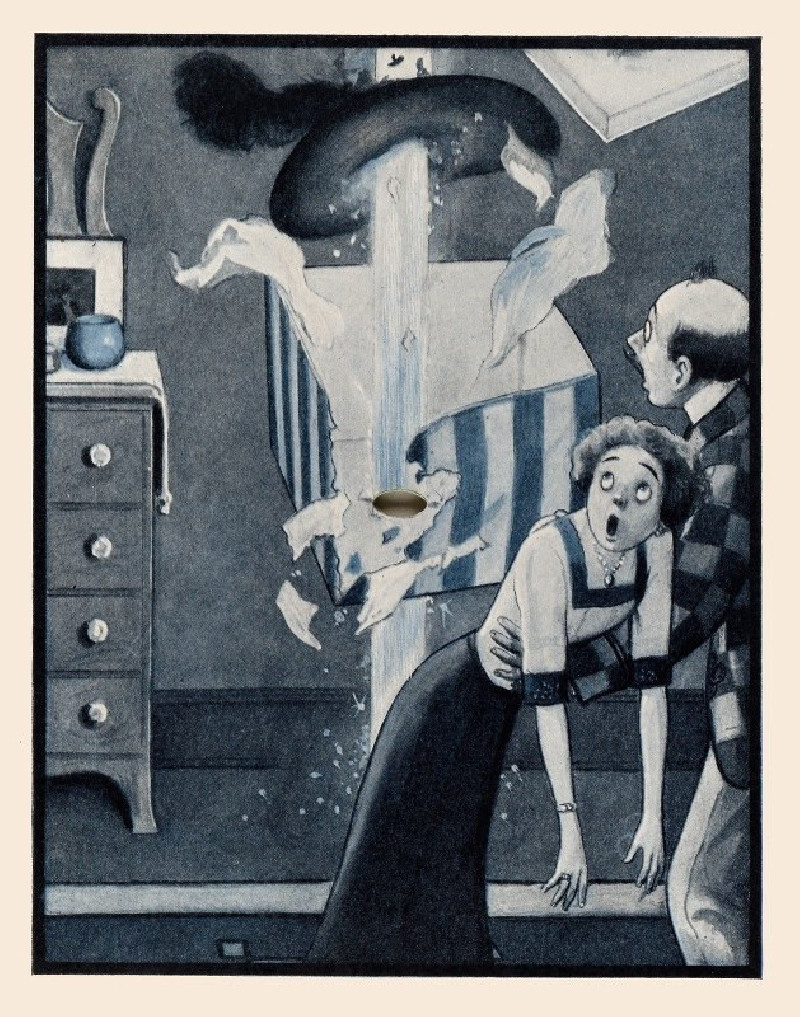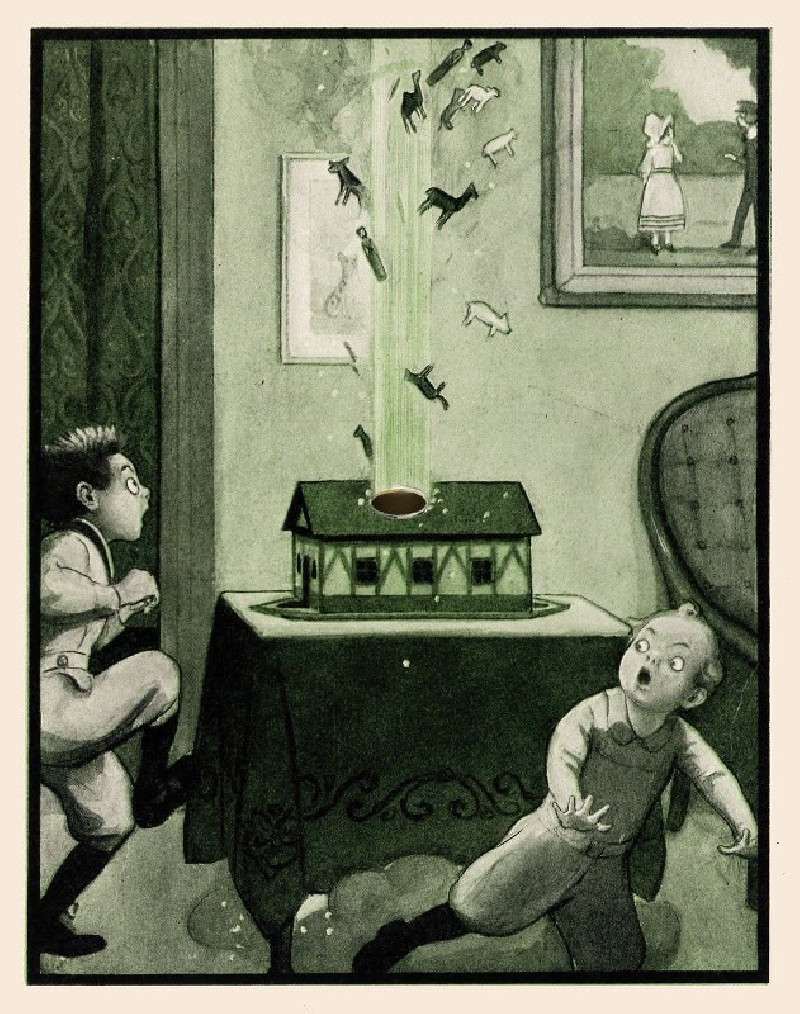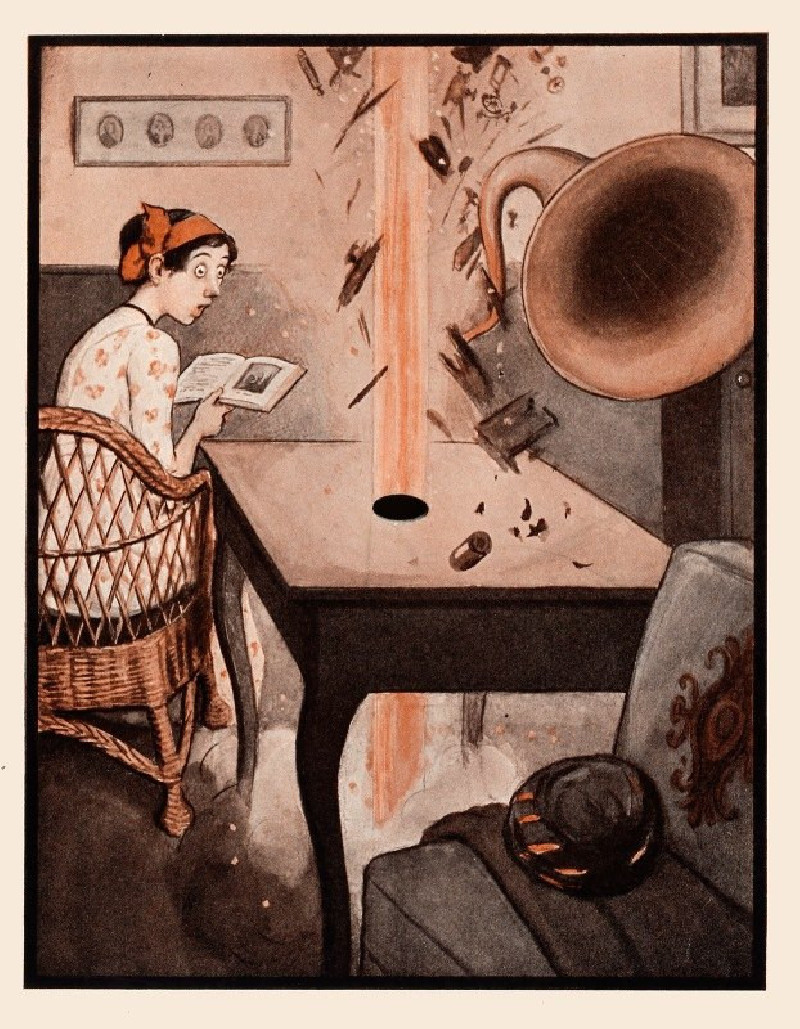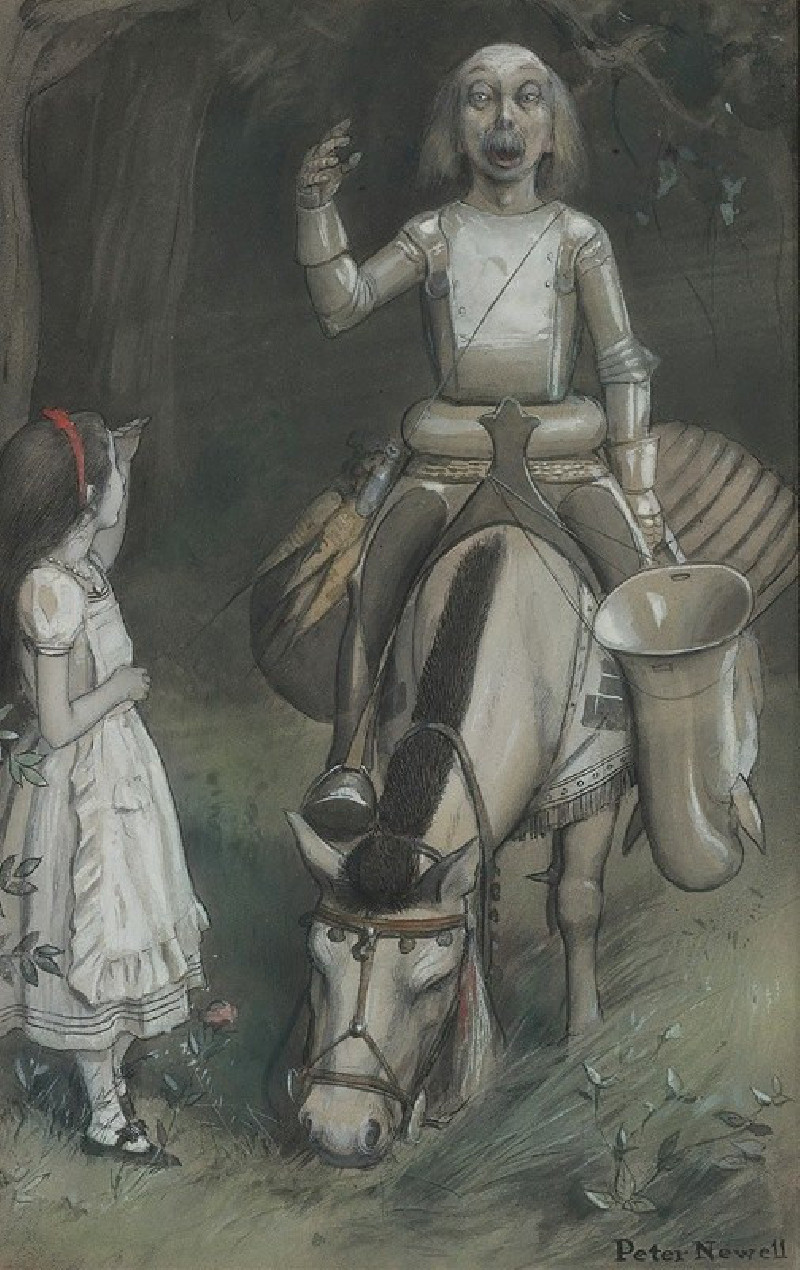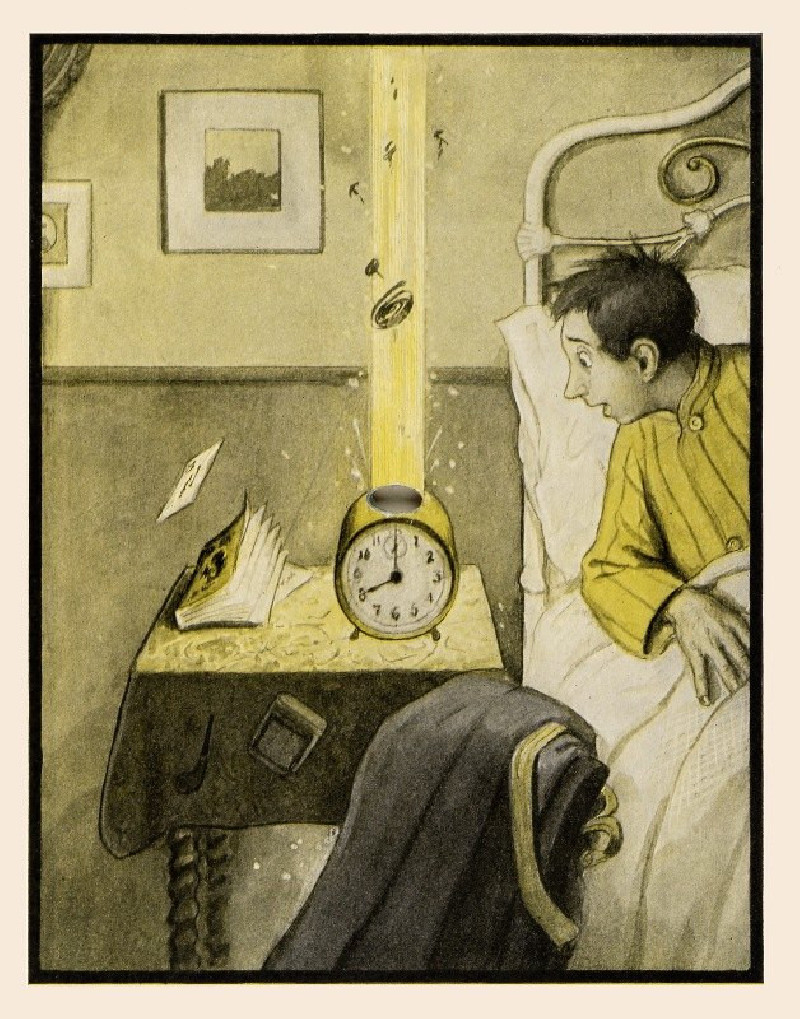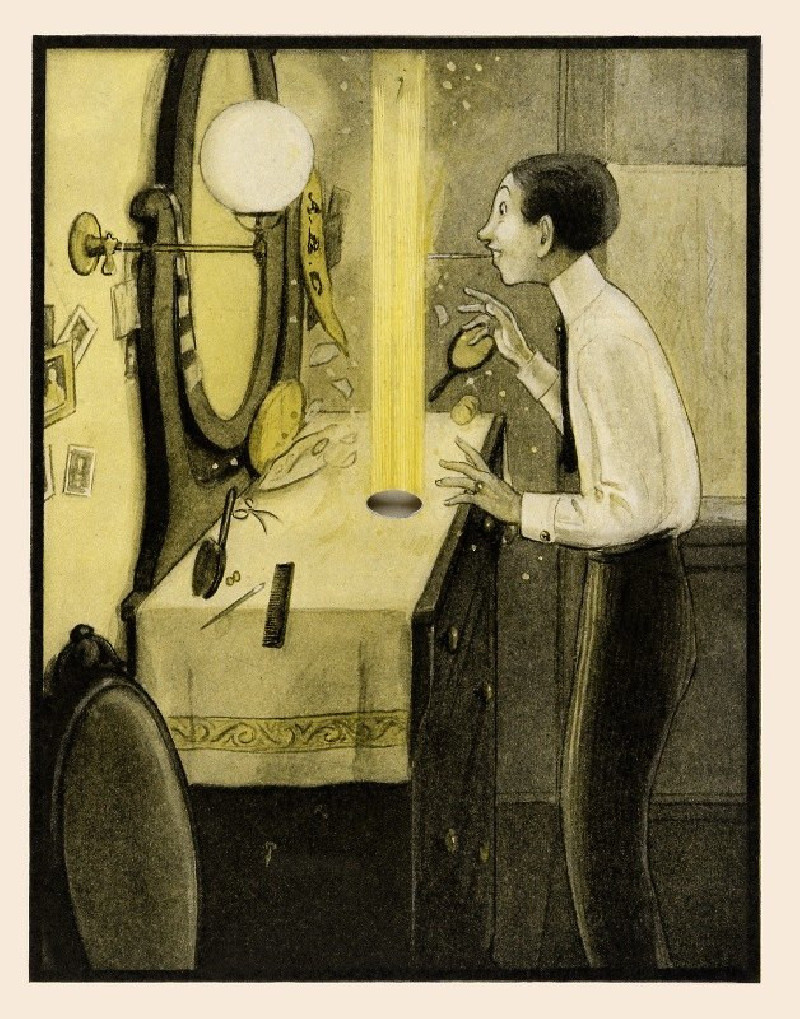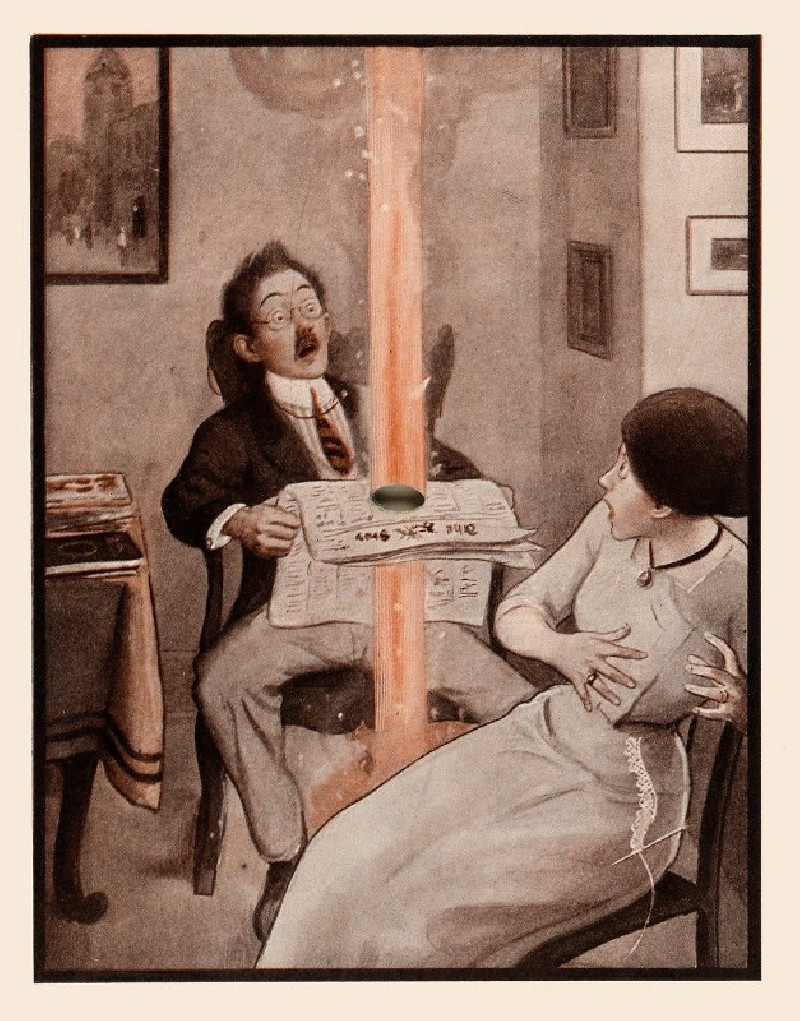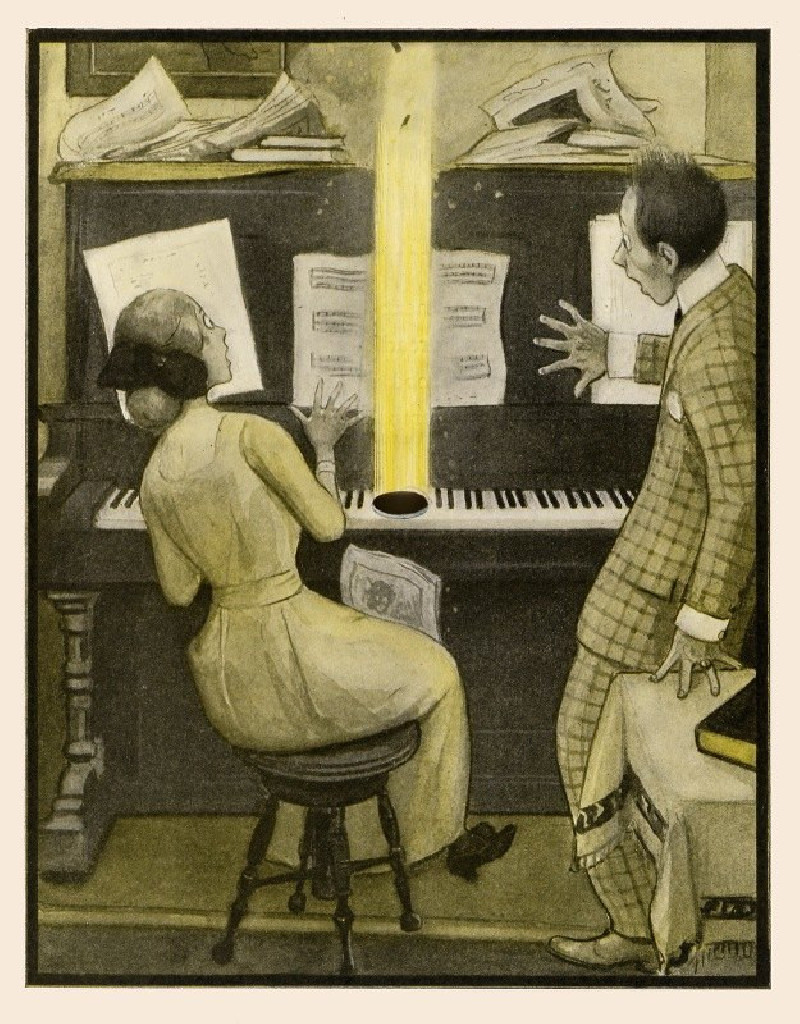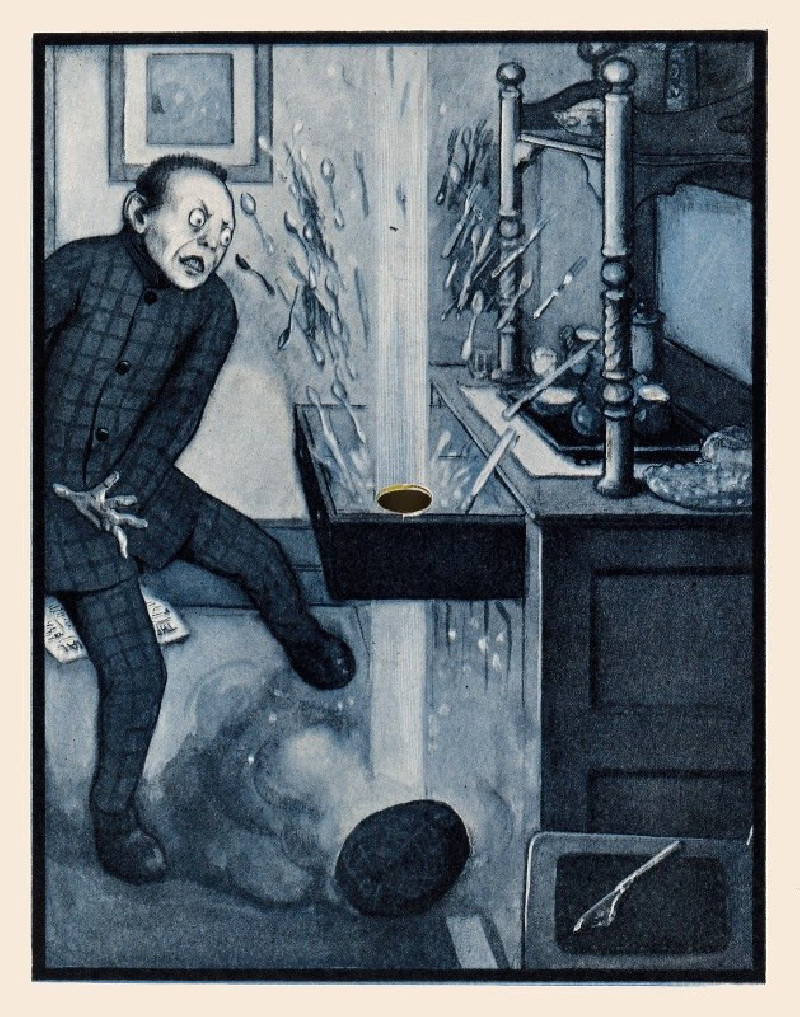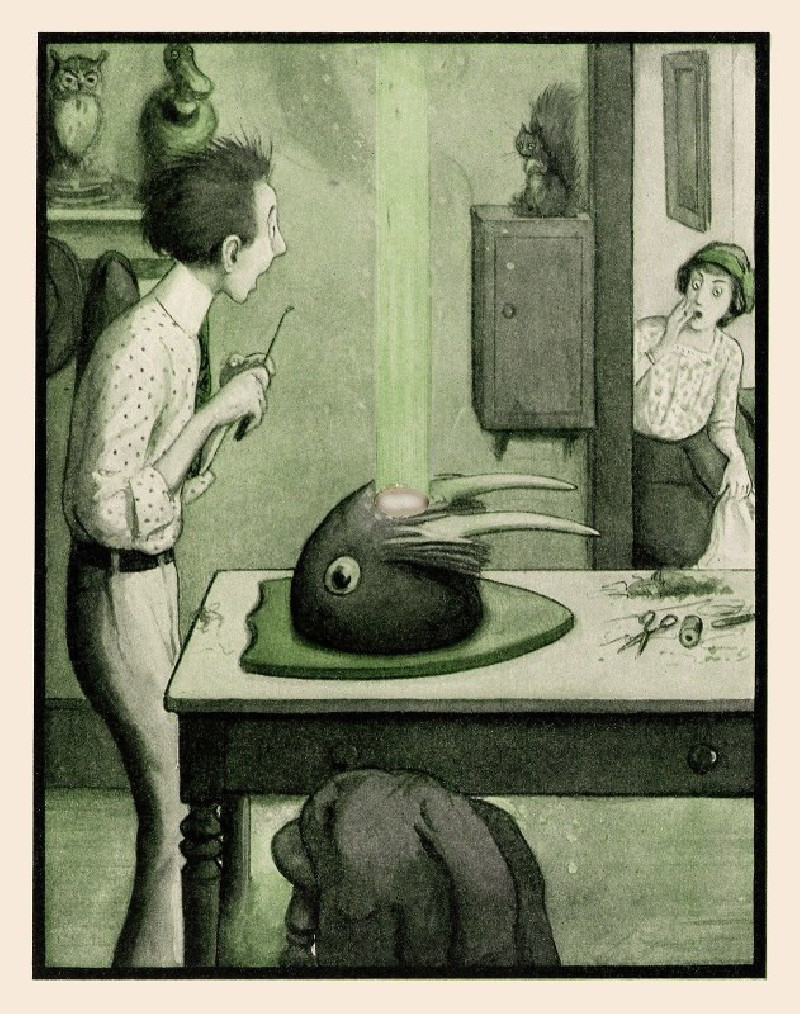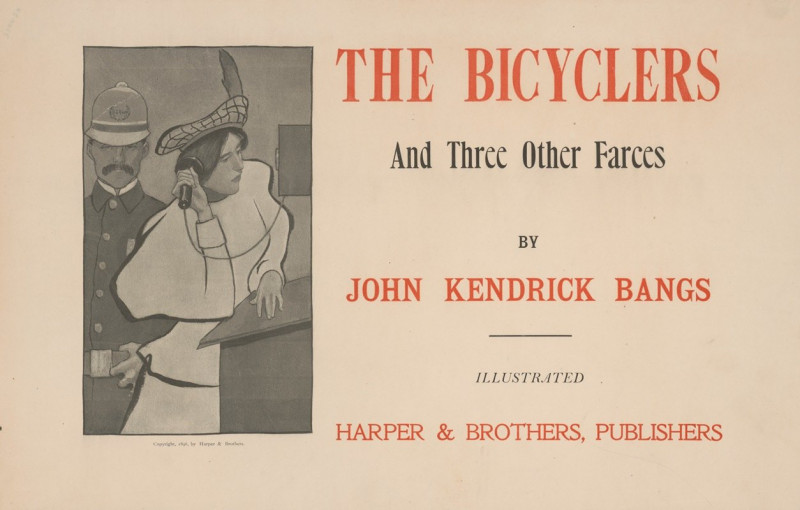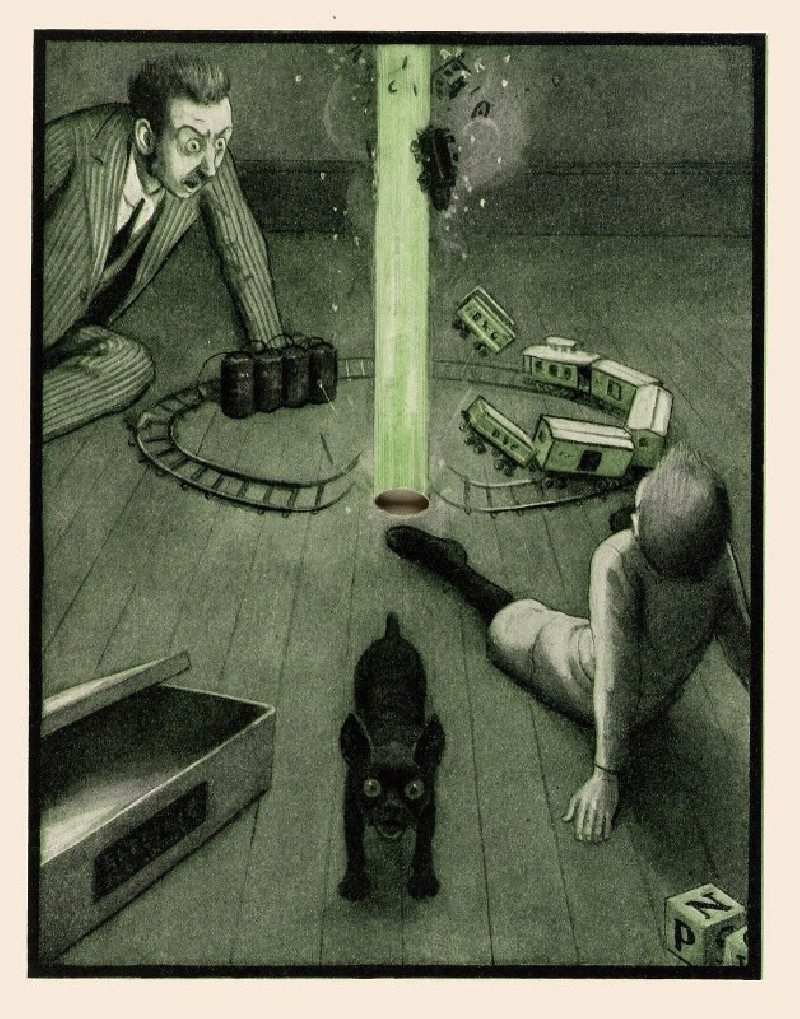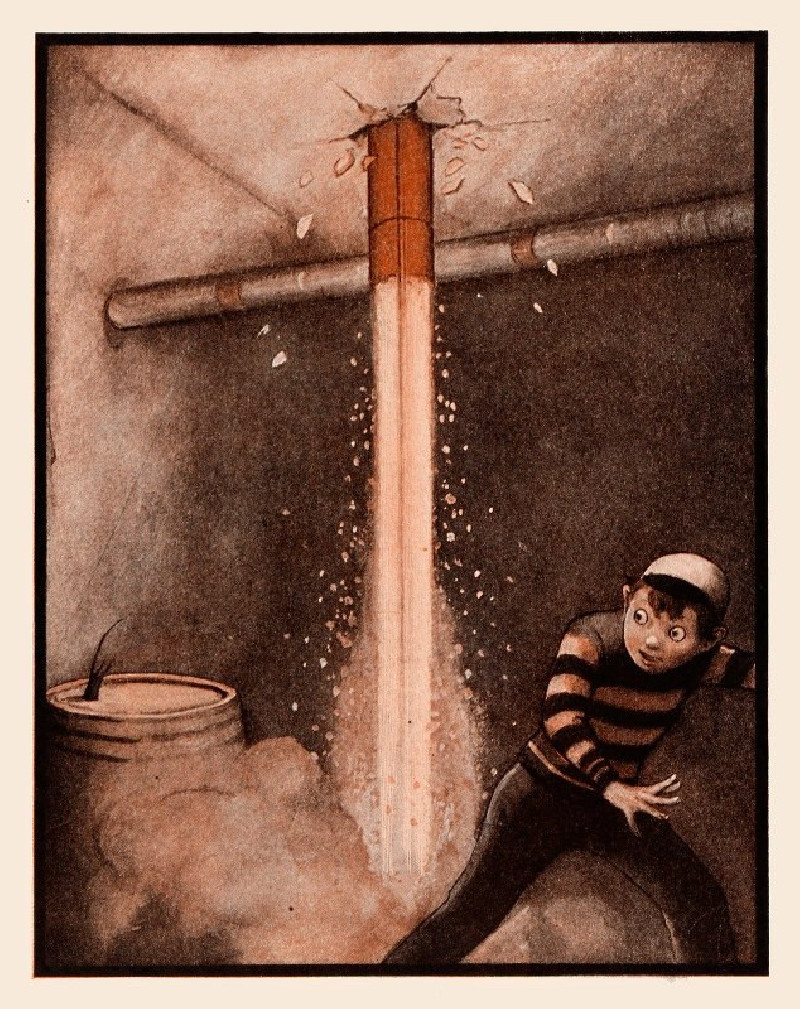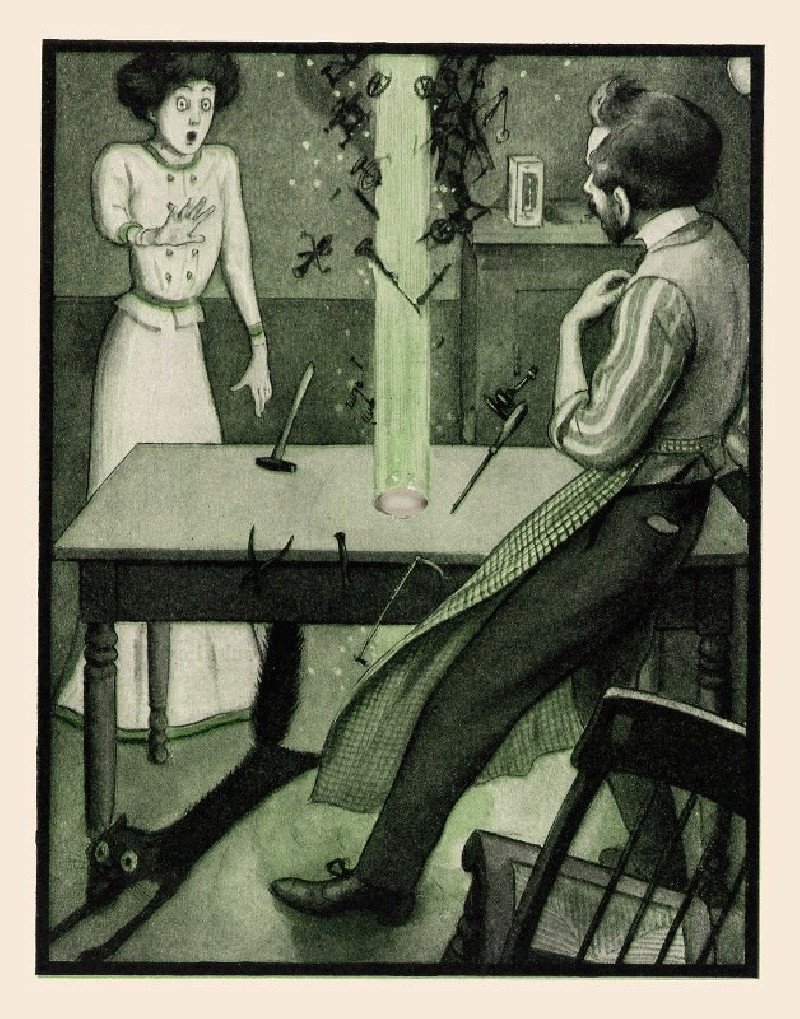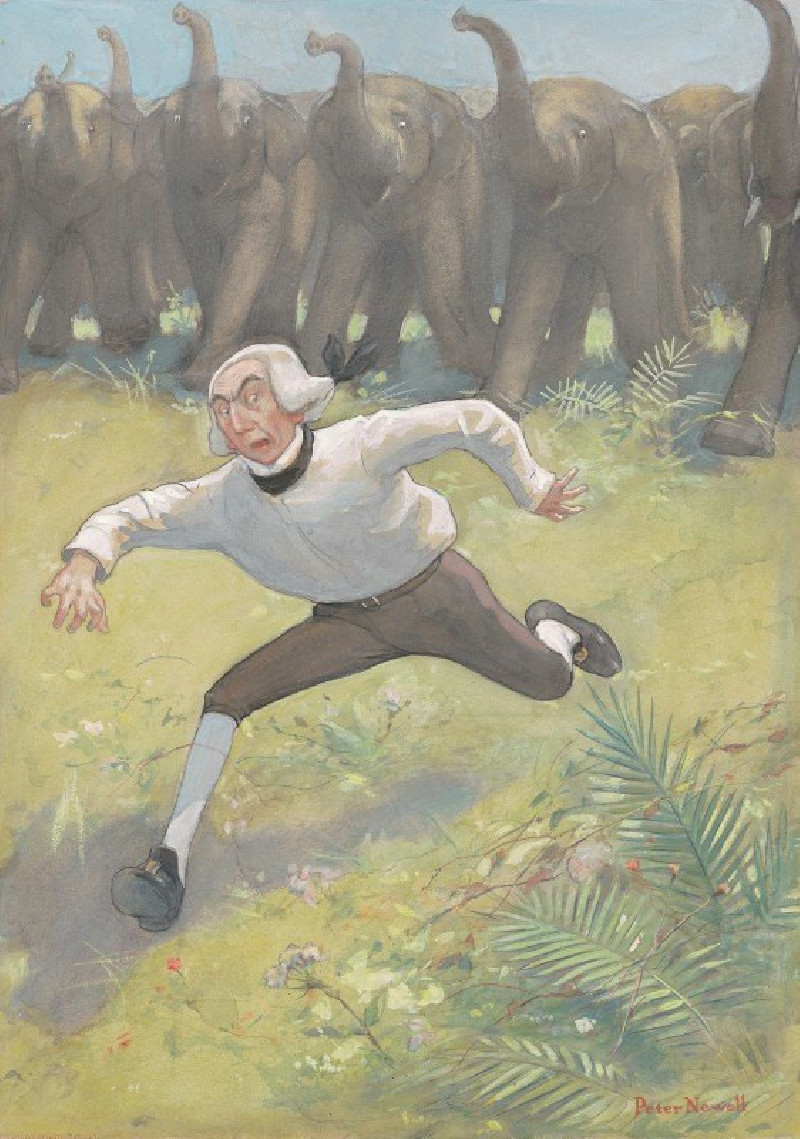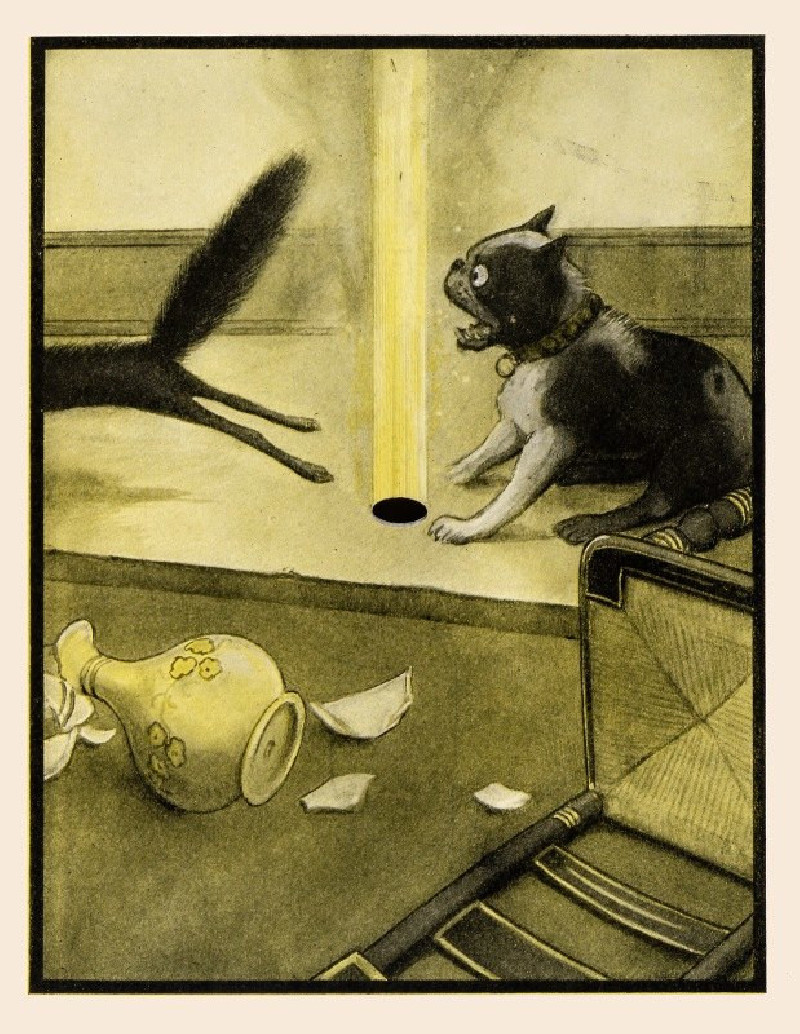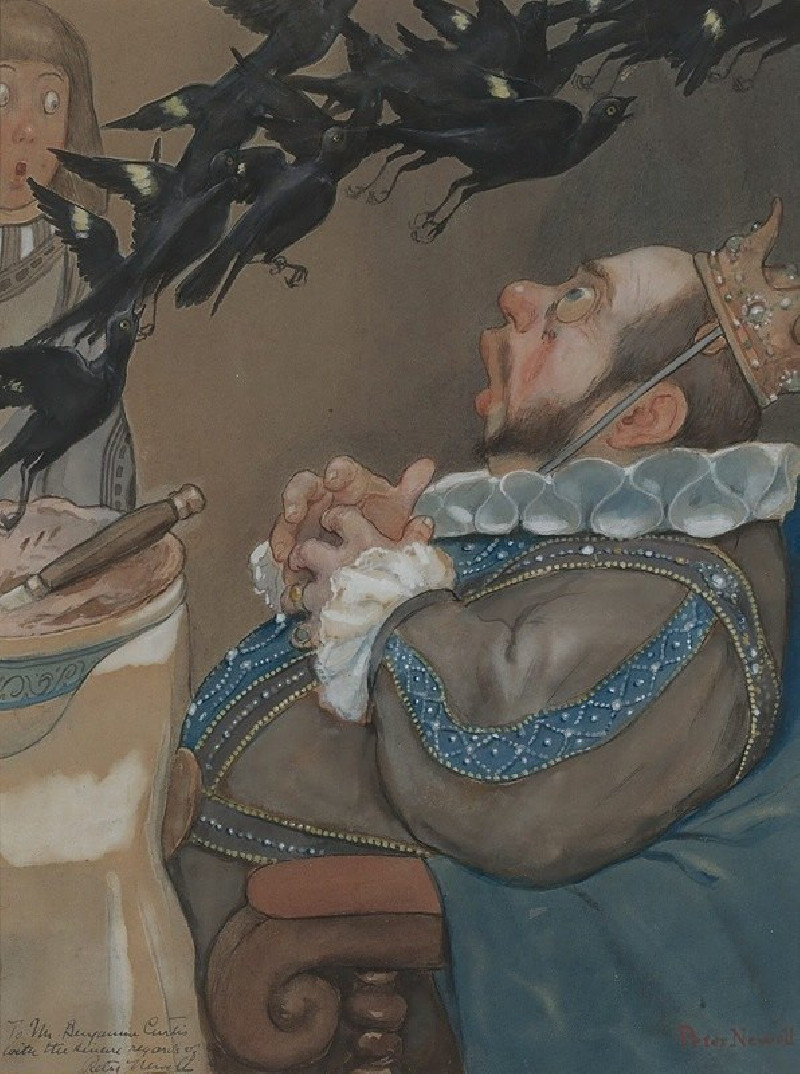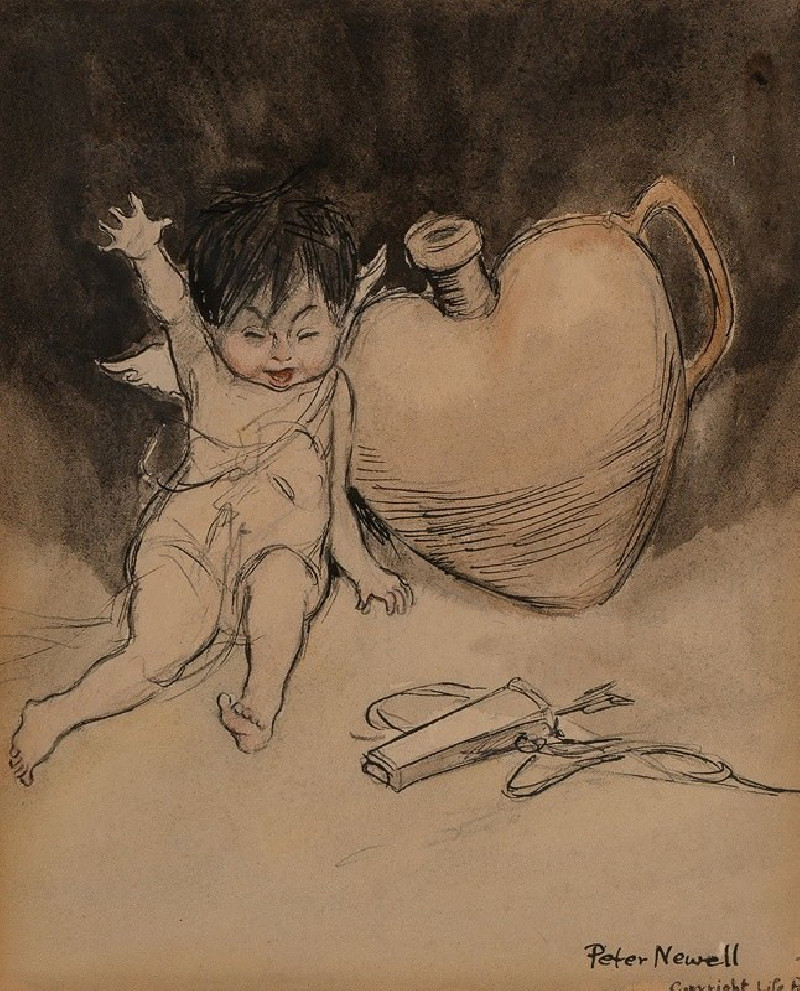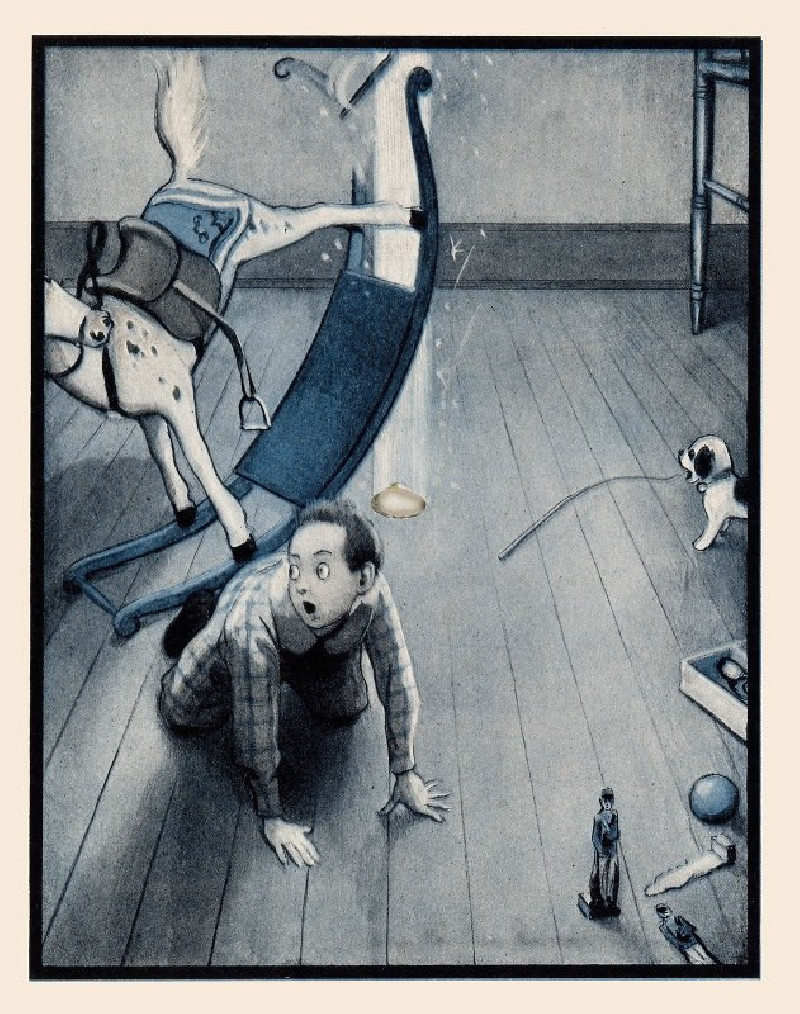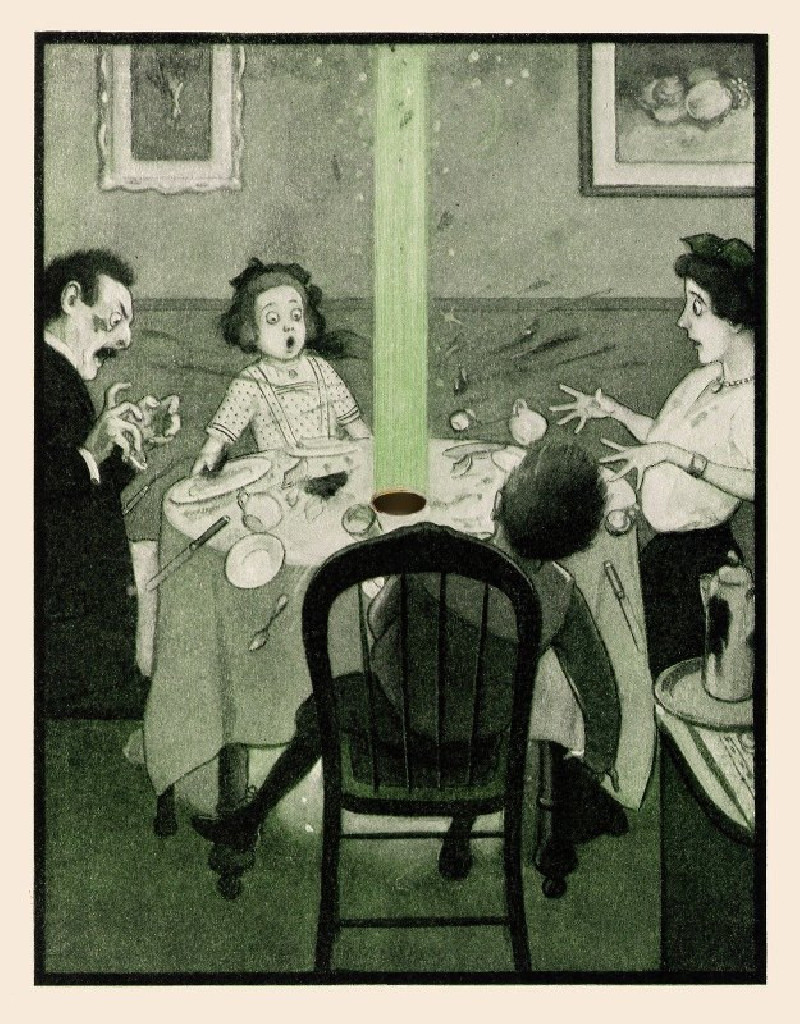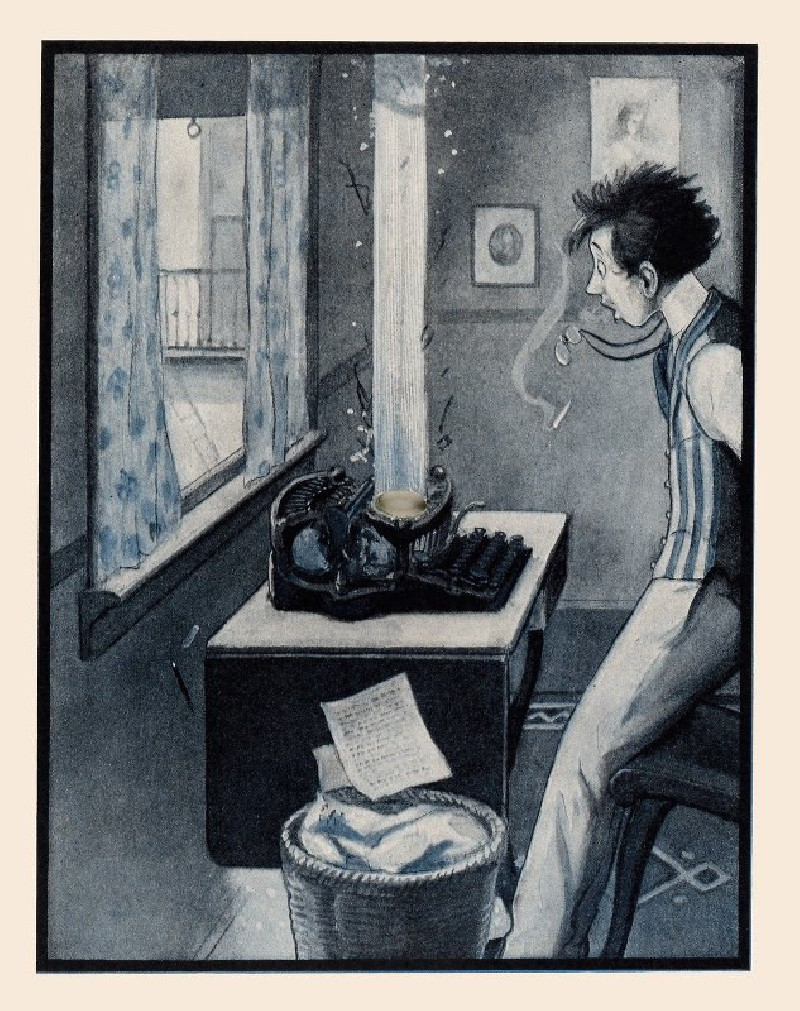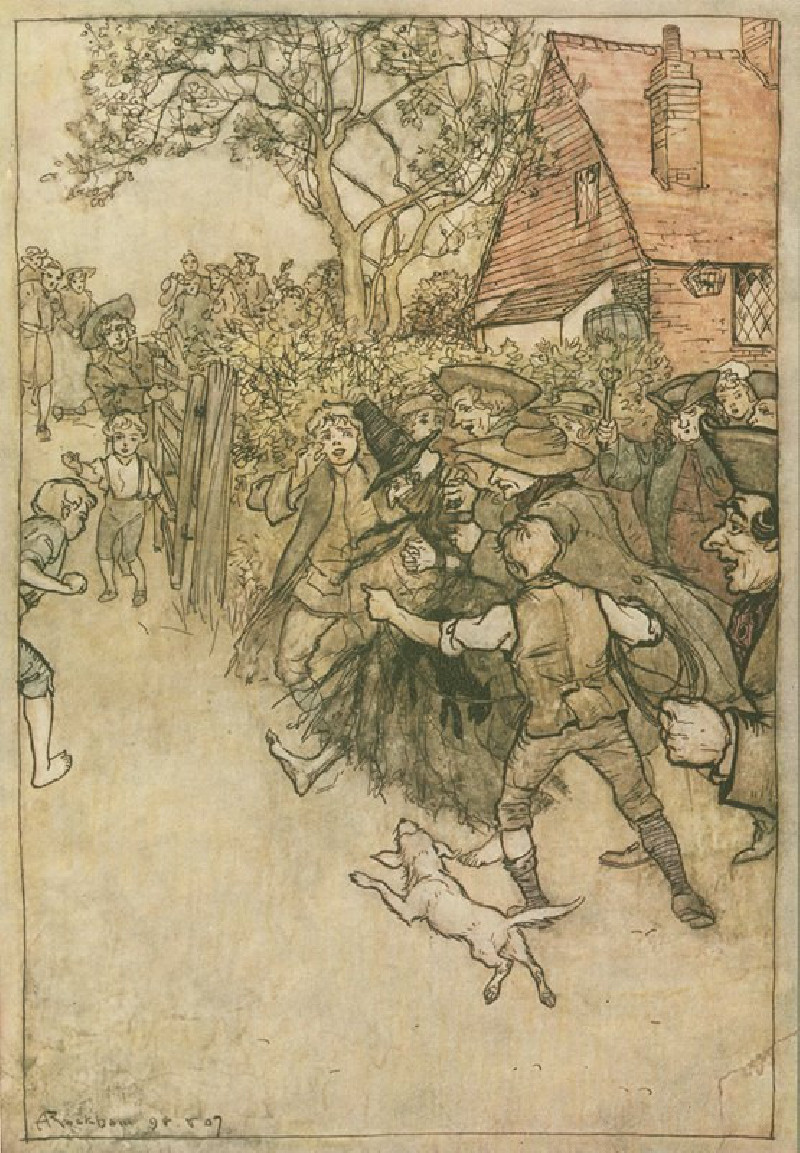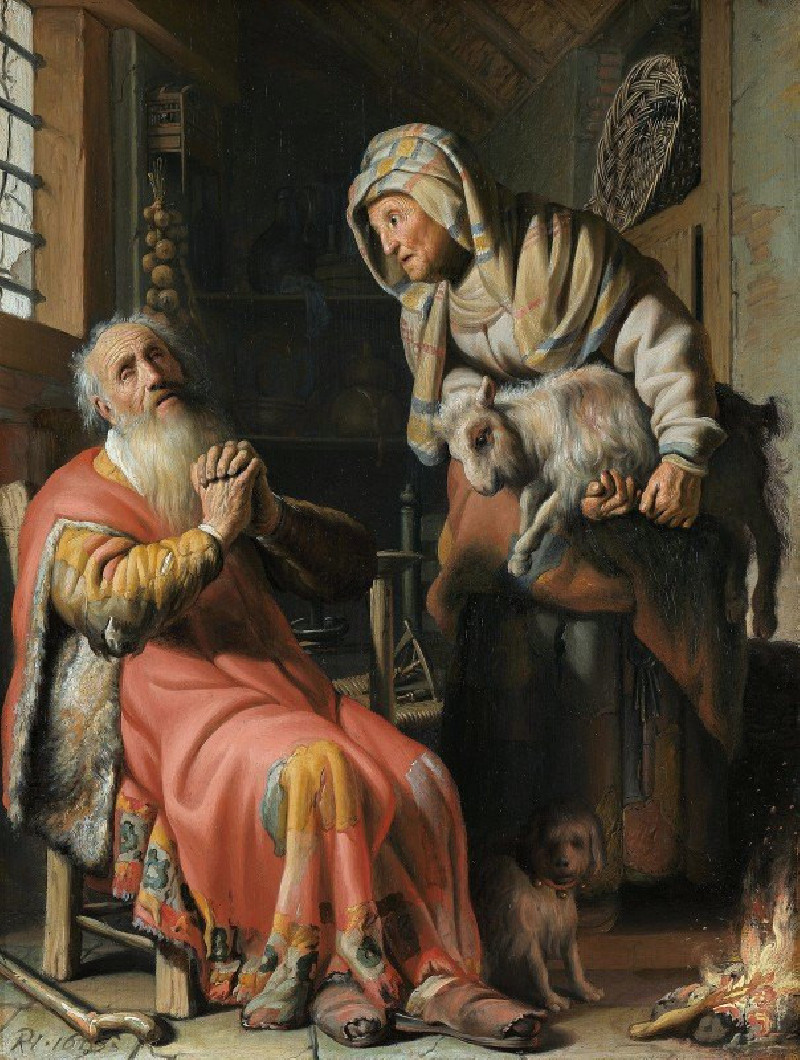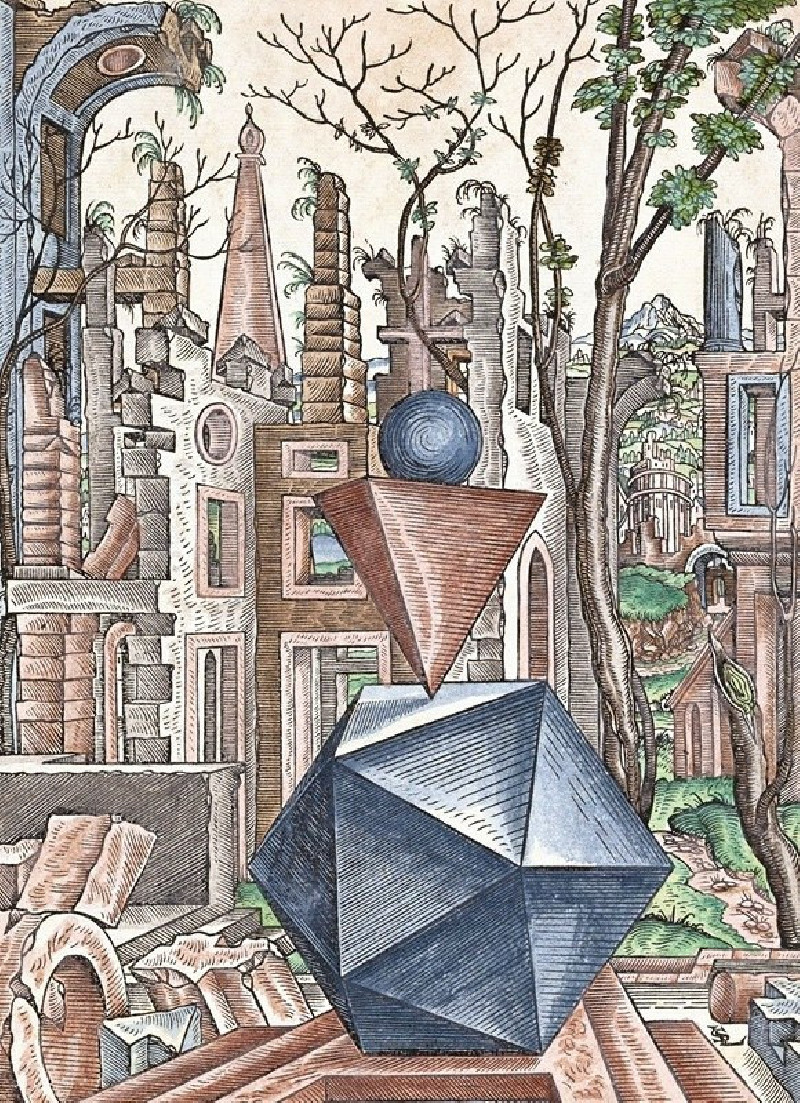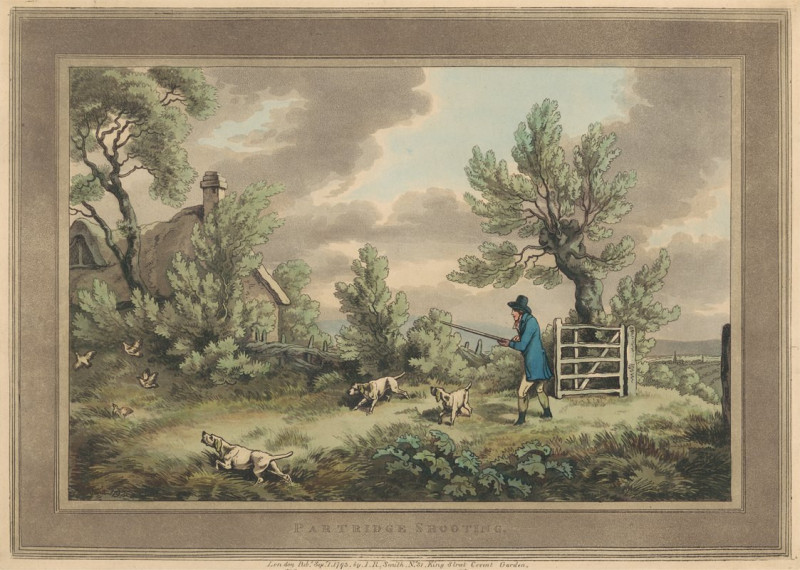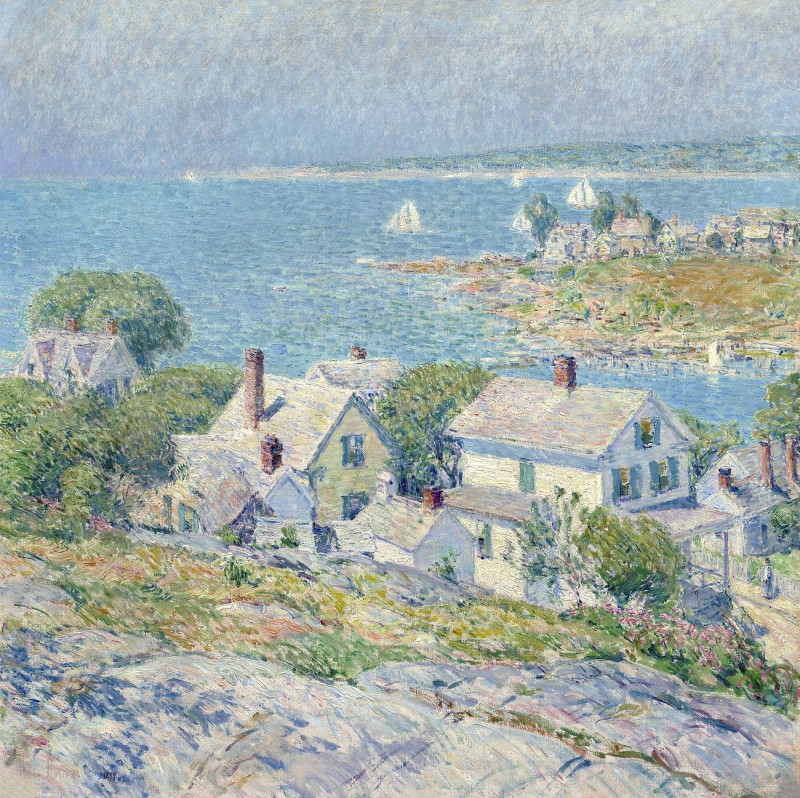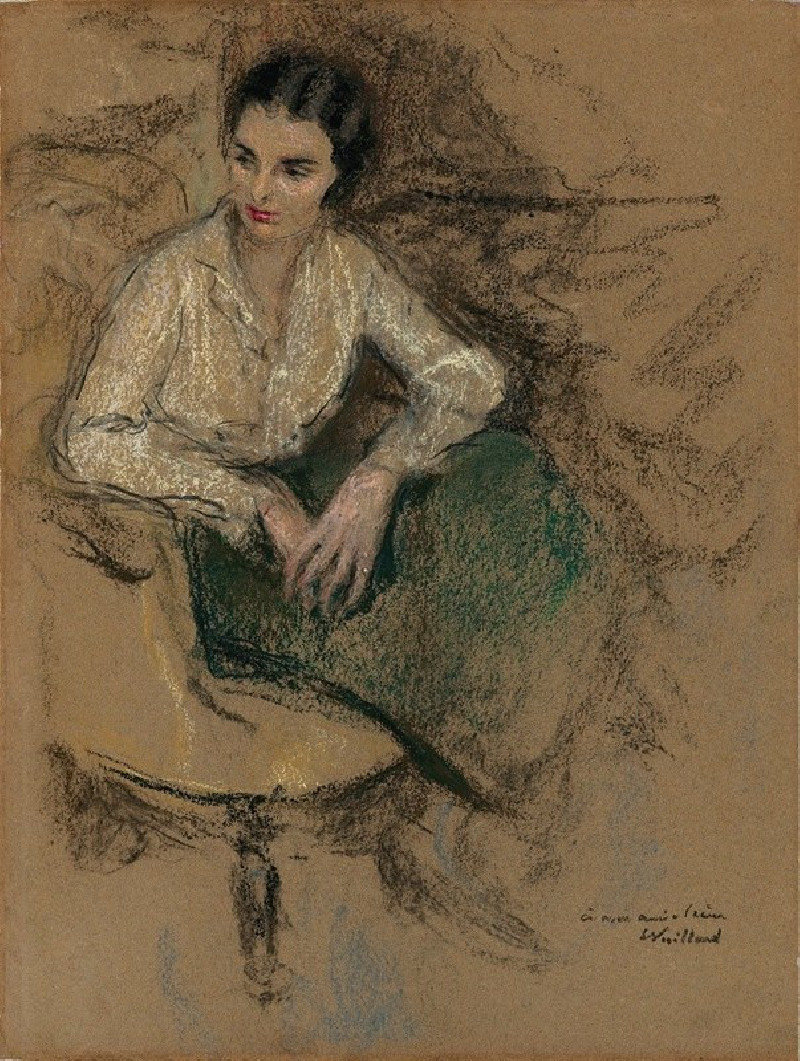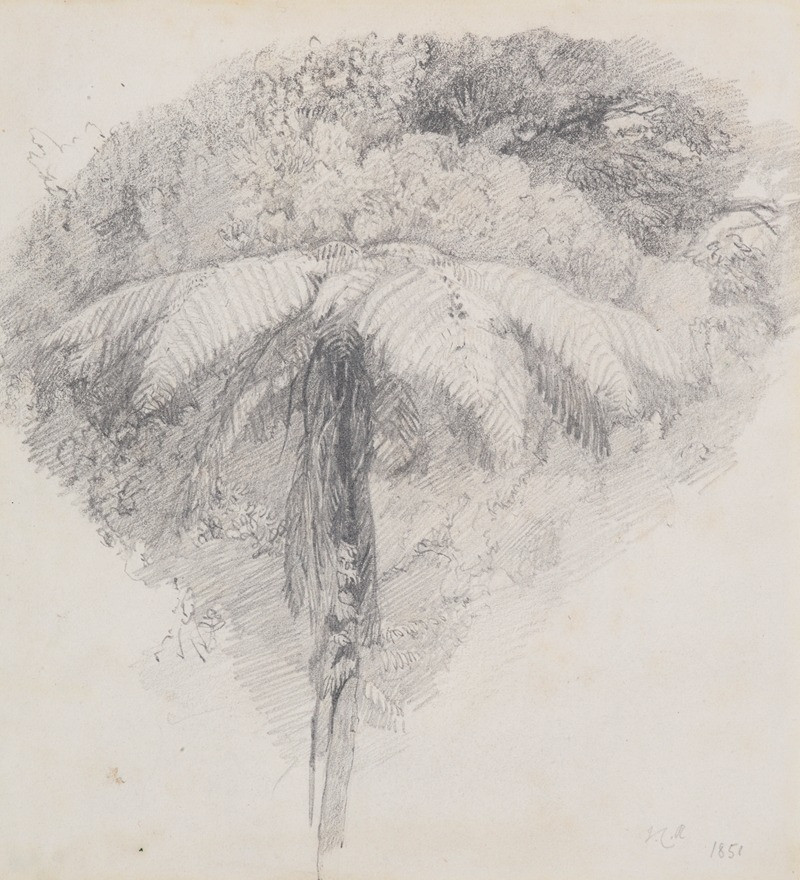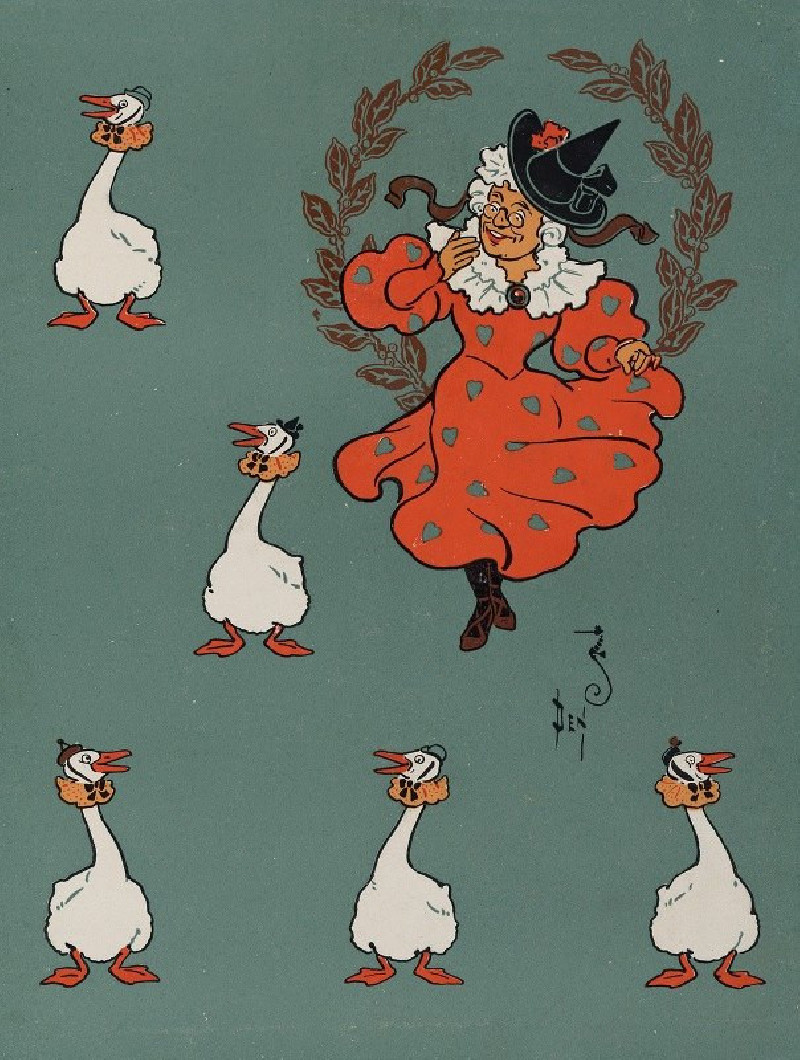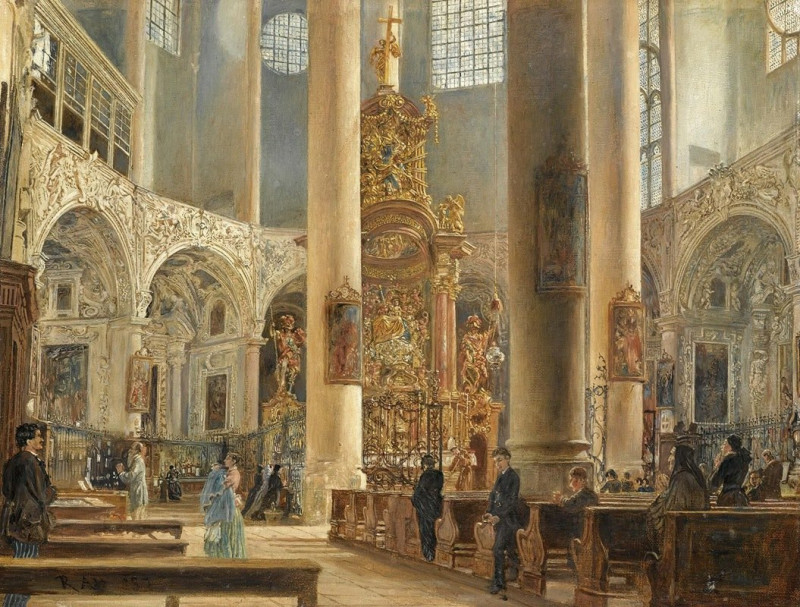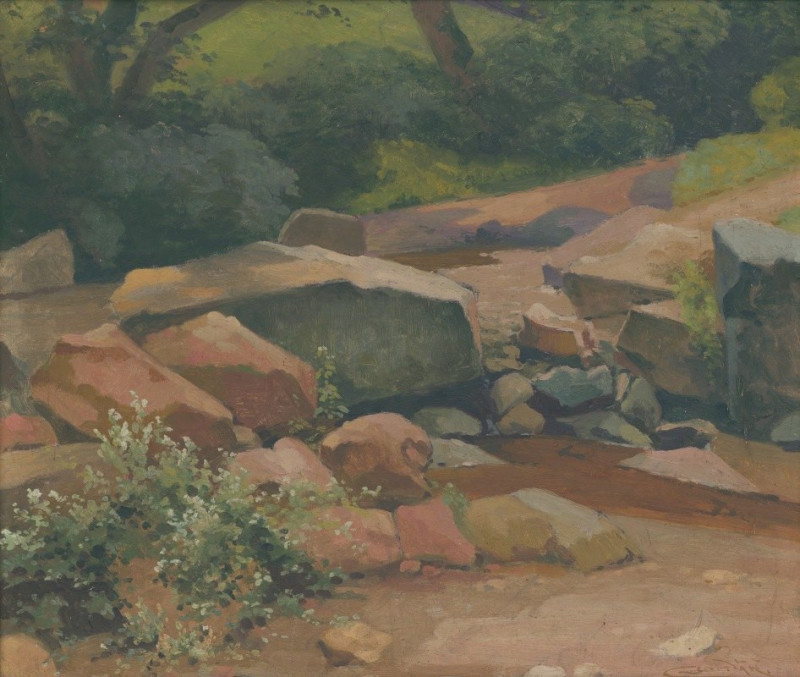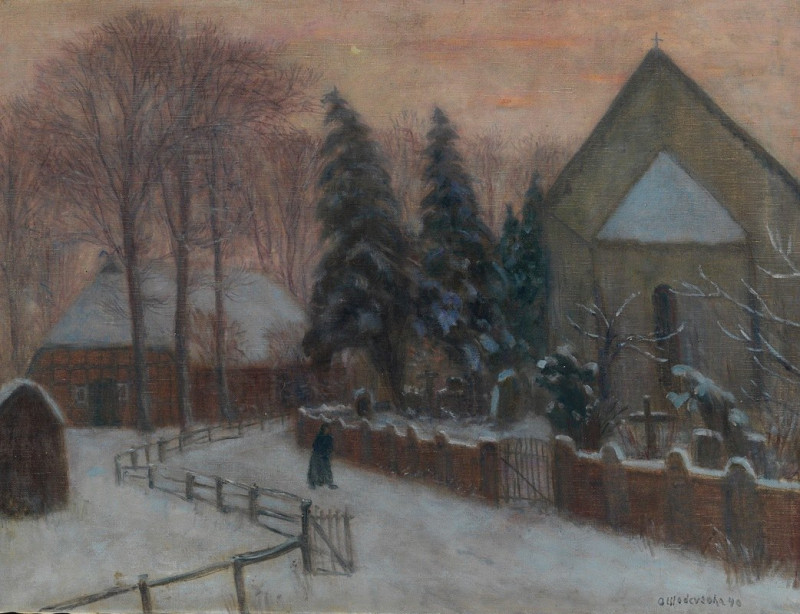The Rocket Book Pl 14 (1912)
Technique: Giclée quality print
Recommended by our customers
More about this artwork
"The Rocket Book Pl 14" by Peter Newell (1912) captures a moment of fantastical chaos as part of the artist's unique visual storytelling method. In this illustrative work, the scene unfolds in what appears to be a cozy interior, irrevocably disrupted by the unexpected intrusion of a rocket. The artwork reveals two figures, a man and a woman, reacting with varying degrees of shock and bewilderment. The man stares in astonishment while the woman's expression morphs into one of sheer horror.Peter Newell's artistic mastery is showcased through the dynamic and explosive motion of the rocket, which tears through the floor, bringing with it a cascade of broken planks and splinters. Above, surreal ghost-like figures emerge from the rocket's path, adding an ethereal quality to the illustration. Newell's use of muted shades of blue and gray contrasted with blasts of white and the stark darkness of the rocket's aftermath accentuates the drama and unexpectedness of the moment.
Delivery
Returns
Peter Sheaf Hersey Newell was an American artist and writer. He created picture books and illustrated new editions of many children's books. A native of McDonough County, Illinois, Newell built a reputation in the 1880s and 1890s for his humorous drawings and poems, which appeared in Harper's Weekly, Harper's Bazaar, Scribner's Magazine, The Saturday Evening Post, Judge, and other publications.

